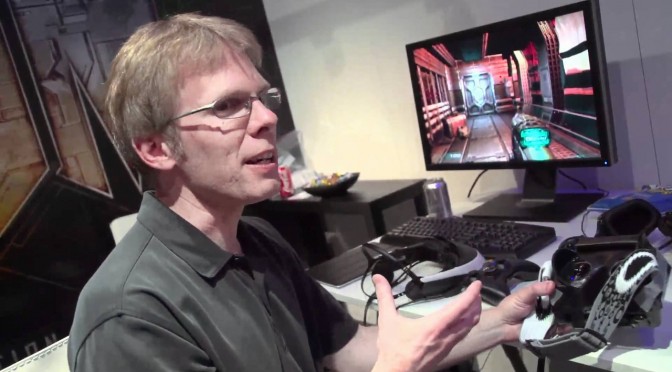During Oculus Connect 2014, John Carmack took the stage and talked for one hour and a half about various topics. The guru programmer talked about his relationship with Samsung, solutions for various issues present in Oculus Rift’s DK2, the ability to fully enjoy a VR experience, as well as the most important result coming from the mobile environment that is no other than the asynchronous time warp notion.
Asynchronous Time Warp basically gives developers the ability to de-couple the refresh rate of a screen from the rendering of the eye buffers. Basically, what this means is that a screen will be refreshing at your native rates all the time, but the rendering of your game will be at a lower FPS. Thus, games will look smooth even while running at – say – 30FPS.
Obviously, this is not as good as ‘true’ 60FPS but it’s a great workaround for all games that suffer from weird and unexplained slowdowns. Most importantly, it’s a better solution than frame interpolation, as the latter is plagued with input latency issues. It’s also a great feature for less powerful GPUs, or for systems that aim to offer 4K or Oculus Rift experiences.
“Asynchronous Time Warp will allow you to, in theory, have a 30Hz game that’s get updated to the screen 60 times per second” said Carmack and continued:
“So we are trying to get that on the PC for a lot of these things because as we start looking at the 90Hz displays and 75Hz at DK2, these are hard to hit even on the PC with all that horsepower. And I’ve said it many times before and people don’t like to hear it, but the PC costs about a factor of 2X in sort of the overhead that you wind up incurring when you are dealing with latency, not with bandwidth.”
Carmack concluded that it will be really hard to bring Asynchronous Time Warp on the PC as all vendors will have to work together and agree on implementing such a feature.
“There are challenges on the PC so we are deeply engaged with NVIDIA and we expect them… there is the whole matrix that we’ll have to work through; NVIDIA, AMD, Intel and then PC, Mac and Linux. That’s a lot of work to get some of these really twitchy stuff working. The work is on going right now and there are varying levels of optimism and despair amongst different people in the company about how well this is actually going to work out on the PC.”
Of course Carmack wants to bring Asynchronous Time Warp for VR gaming on the PC, but we don’t see why this feature – in case it does come to our platform – won’t be featured in ‘normal’ games as well, especially since this will let developers – in the long run – achieve better visuals.
Naturally, mere words cannot give you a proper idea of what Asynchronous Time Warp is all about, so below you can find a video showing this technique in full effect.
We’ve also included Carmack’s entire speech for all those that want to sit back and hear what the programmer guru had to say.
Enjoy!

John is the founder and Editor in Chief at DSOGaming. He is a PC gaming fan and highly supports the modding and indie communities. Before creating DSOGaming, John worked on numerous gaming websites. While he is a die-hard PC gamer, his gaming roots can be found on consoles. John loved – and still does – the 16-bit consoles, and considers SNES to be one of the best consoles. Still, the PC platform won him over consoles. That was mainly due to 3DFX and its iconic dedicated 3D accelerator graphics card, Voodoo 2. John has also written a higher degree thesis on the “The Evolution of PC graphics cards.”
Contact: Email

